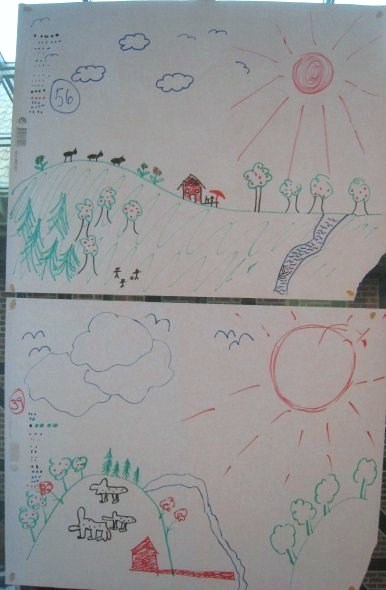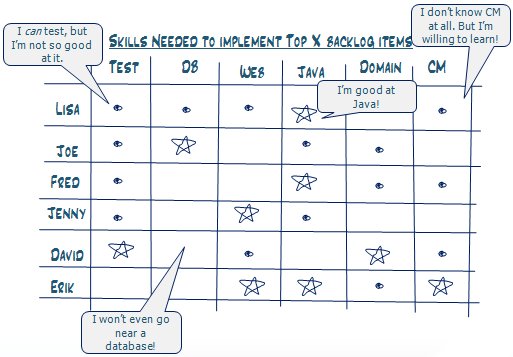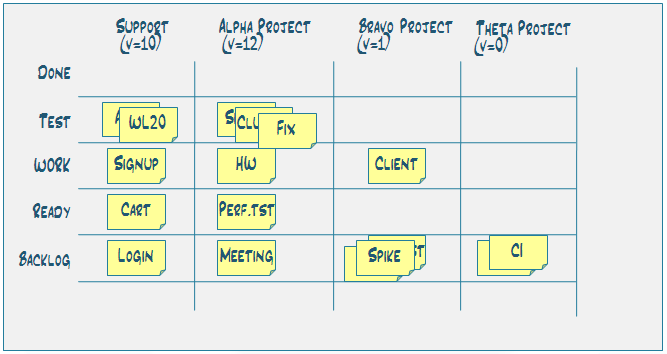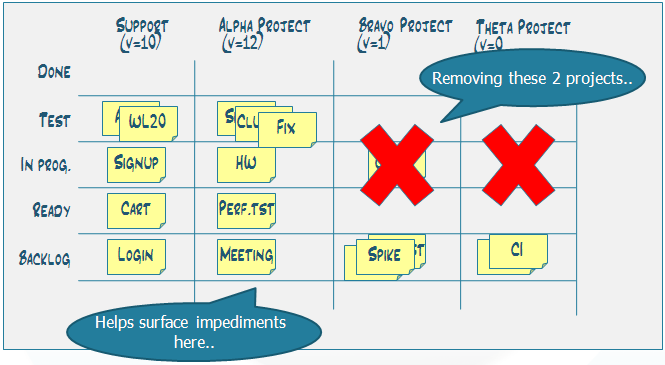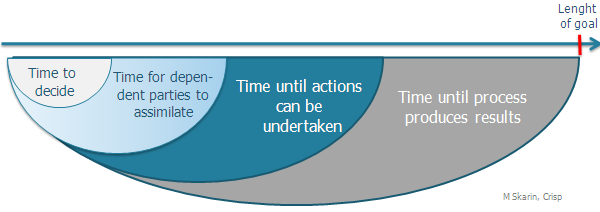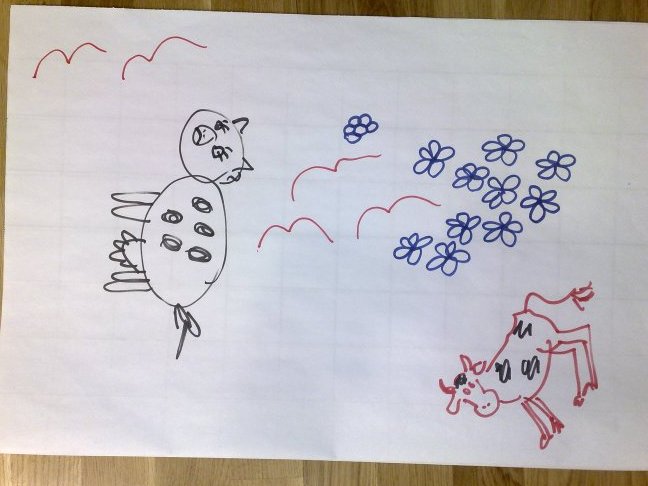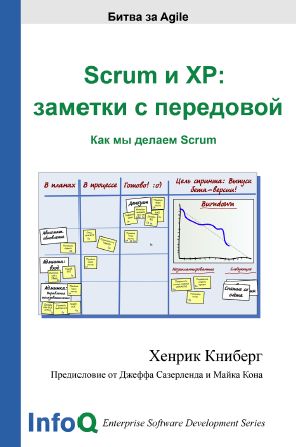David Barnholdt and I recently attended a 1-week PSL workshop (Problem Solving Leadership) with Jerry Weinberg, Esther Derby, and Johanna Rothman, one of the best courses I’ve ever attended. After that course we’ve been thinking about ways to make our own training courses more interactive. David was first out and invented a brilliant exercise demonstrating
Continue readingCrisp's BlogPage 31
from the Crisp Consultants
Don’t let Java ruin your JavaFX
Me and Oscar is currently working on a small project, just to learn JavaFX.
We stumbled on some nasty crashes which we at first did not understand.
ArrayIndexOutOfBoundsException? Is there a bug in JavaFX?
It turned out to be a callback from Java. Let us see how we got there.

Lift 1.0 !!
Webbramverket Lift, skrivet i Scala, har precis släppts i version 1.0. Mycket spännande, tycker jag. Citat från Michael Galpin: Lift is the only new framework in the last four years to offer fresh and innovative approaches to web development. It’s not just some incremental improvements over the status quo, it redefines the state of the
Continue readingIs your team cross-functional enough?
Cross-functional team doesn’t mean everybody has to know everything – this seems to be a common misinterpretation though. Cross-functional just means that the team as a whole has all skills needed to build the product, and that each team member is willing to do more than just their own thing. Are you unsure if your
Continue readingLego as Scrum simulation
Alexey Kritivitsky (Ukraine Agile community) has created a fun Scrum training exercise new teams using Lego.
Since games is such a brilliant teaching tool, you should know about it 🙂
http://tinyurl.
ScrumMaster på svenska?
Vad borde ScrumMaster heta på svenska, och varför heter det ScrumMaster och inte Scrum Master på engelska?
Enligt en anekdot jag hört så var ursprungsnamnet Scrum Slave, men Ken Schwaber och Jeff Sutherland insåg tidigt att det inte skulle vara så säljande. 🙂
Continue readingKanban learnings – Running multiple projects hides impediments
6 months after we began using Kanban to two support / system administration teams they realized that the downside of having multiple projects running outweighed the possible upside.
| Upside | Downside |
|
|
What horizon for should I use for a goal?
How long time should there be between goals?
Some make a habit of setting yearly goals. Some set quarterly. Small organisations in a turmoil can set weekly goals.
But what is "just right"?
Kaizen (Continuous improvement) should be the first improvement
How can anyone say
that they are Lean or agile when they don’t inspect and adapt.
What most companies have in common when they implement process improvement is lack of continuous improvement…..
Continue reading
An exercise based on my PSL experience:The power of open-ended requirements
Today I held a class in Scrum and Lean.
I was able to test some of my learnings from the PSL class in a exercises I made up just the day before.
The results were almost too good.
Beware of when Lean is used as a cover up for old school managment
Do you believe a manufactoring plant is a good model for software development?
No? Then what why would you strive so hard to apply Lean in IT?
Think about the answer for a while.
Why Scrum is better than Kanban
I have for some time been thinking, what is best, Kanban or Scrum. I can’t make up my mind so I decided to write two blog entries, one where I have the "I love Kanban" hat on me and one where I’m wearing a "I love Scrum" T-shirt. My conclusion is, not very suprisingly, that it depends on the situation.
In this entry I take the Scrum T-shirt on.
Continue readingWhy Kanban is better than Scrum
I have for some time been thinking, what is best, Kanban or Scrum. I can’t make up my mind so I decided to write two blog entries, one where I have the "I love Kanban" hat on me and one where I’m wearing a "I love Scrum" T-shirt. My conclusion is, not very surprisingly, that it depends on the situation.
In this entry I take the Kanban hat on.
Continue readingJava 7 update från Alex Miller
Alex Miller har precis bloggat om vad han tycker verkar ske när det gäller Java 7. Vi kan få en preview till JavaOne 2009 (dvs juni) och ett teoretiskt releasedatum på januari 2010, men Miller tycker det är för mycket osäkerheter för att tro på en så pass snabb release. Generellt sett så tror jag
Continue readingValue trumps flow, and flow trumps waste reduction
Yesterday, in a post by David Andersson, he so accurately in few words managed to describe the fundaments any Lean implementation.
"In Lean operational decisions, value trumps flow, and flow trumps
waste reduction."
The value of waste reduction (over flow) is for me one of the great misunderstanding of Lean.
Continue readingLean för mjukvara på 10 minuter
En kort sammanfattning av grunderna i Lean på 10 minuter. Concept To Cash, Cykeltid optimering och köer och flaskhalsar.
Lean handlar om att bli snabb genom att sluta göra onödiga saker.
Lean värdesätter det som levereras och inte det som påbörjas. Att få saker ur händerna istället för att jobba hårt.
Continue readingAgile tools
Here’s a great list of agile tools on Mike Cohn’s User Stories site! Primarily for product backlog and user story management. Only problem is that there are way too few reviews so far. Are you using an agile tool? Go submit a review now and spread the link to your friends! Let’s help build this
Continue readingRespons till ‘därför misslyckas företagen med Scrum’
(sorry, this article is in Swedish, because it is a response to a Swedish article. I won’t make this a habit.)
I en artikel i Computer Sweden den 3 feb står det ”siffror visar att nio av tio Scrumprojekt misslyckas”. Men de angivna siffrorna handlar i själva verket om något helt annat – att 9 av 10 personer som säger att de kör Scrum inte implementerar Scrum fullt ut. Detta säger ingenting om huruvida själva projektet lyckades eller inte (eftersom Scrum inte är ett självandamål). Denna typ av sensationsjournalistik gynnar ingen – utom möjligen tidningen som vill öka sina tittarsiffror, men på bekostnad av trovärdighet.
Låt oss därför titta på lite mer relevanta siffror istället….
Continue readingKanban checklists
These are checklists I have compiled to help my Kanban teams stay focused
|
 |
Debrief of Problem Solving Leadership class
Last week I attended the Problem Solving Leadership class held by Jerry Weinberg, Johanna Rothman and Esther Derby.
It was a week full of exercises and simulations and I consumed more knowledge during one week than I usually do for months.
And I am still digesting it. This is a early debrief of what I think I have learnt.
When to use Scrum and when to use Lean?
I recently got a valid question from a collegue and it deserves an answer.
"When do I use Scrum and when do I use Lean?"
Lean predicts that work happens in a certain order. Scrum has a "chaos" approach where work can be done in best possible way, dictated by the situation.
Therefore Scrum works better than Lean in environments with rapid change, on the edge of chaos where the same solution rarely work twice.
Continue readingFuture of Agile conference
Kanban pracitioner or a Scrum team thinking of adopting it?, don’t miss out on the "Future of Agile" conference 27:th of May.
An unique opportunity to learn from practitioners and experts about experiences and best practices for Kanban and Lean in our "Bring your kanban board" session. Joining us is David Anderson – father of Kanban.
Future of Agile, May 27, Stockholm
Continue readingEssensen och kruxet med testdriven utveckling
När du förstått poängen med testdriven utveckling kommer givetvis krånglet. Så hur tar man sig vidare?
Vi börjar med poängen så att vi är överens om vad vi menar.
Testdriven utveckling (TDD) säger att man först skriver ett test som fallerar (viktigt), sedan implementerar man så att det inte längre fallerer.
I det läget tar man sig en funderare om man tycker att designen och kodstrukturen är enklast möjliga. Om inte så fixar man till den, utan att ändra vad koden gör, refactor på engelska. Eftersom de tester man har, går igenom så är det tryggt att ändra implementationen.
Vi fortsätter sedan med ett nytt varv, test – implementation – refactor.
Enkelt så långt, men vad är poängen?
Continue readingRussian version of Scrum and XP from the Trenches
A Russian translation of my book Scrum and XP from the Trenches is now available. Thanks Aleksey Solntsev for initiating this project, and thanks to all of the 17 people who contributed (listed on the first page in the book). French, Spanish, Japanese, Chinese, and Portuguese translations are also available. Korean, German, Italian, and Slovak
Continue reading10 really lousy commandments for Java Developers
Aleksey Shevchenko have on developer.com published 10 commandments for Java Developers, and they are of such lousy quality that I just have to respond (this vaguely resembles a xkcd cartoon :-). His commandments are: Add comments to your code Do not complicate things Keep in Mind – "Less is more" is not always better No
Continue readingLyft på rumpan!
I dessa agila tider sker allt mer utvecklingsarbete vid tangentbordet, men är det verkligen bra? Ställ er vid tavlan och rita pilar och bubblor innan ni knackar kod! Fast man kan inte göra som vi gjorde förr, BDUF är fortfarande dött.
Continue readingDictionary for the Agile practitioner
I today got these sent from my collegue Hans Brattberg. It it an essentional vocabulary for the Agile practitioner 🙂
* BLAMESTORMING.Continue reading
Sitting round in a group, discussing why a deadline was missed or a project failed, and who was responsible
* SEAGULL MANAGER.
A manager who flies in, makes a lot of noise, craps on everything, and then leaves
Misslyckat projekt, eller misslyckad budget?
Hur många av er har inte läst om misslyckade projekt, som blivit mycket dyrare än planerat? Jag har svalt detta sätt att resonera, skakat på huvudet, och tänkt "Jaja, vilka kretiner". Men nyss pekade min kollega Mattias Skarin på ett mailinlägg av Roy Morien på en mailinglista med namnet scrumdevelopment (hur hinner han läsa allt?)
Continue readingThe Pomodoro technique
1-2 days every week I schedule “slack” days, where I try to catch up on emails, do some admin, prepare for future engagements, and such. During the past year I’ve been using the Pomodoro technique more and more consistently and, the more I use it, the more I find that it really works well! It
Continue readingHur man får bättre kodkvalitet
Hur höjer man kvaliteten på koden i ett projekt?
Här min topplista på vad man kan/bör göra.
